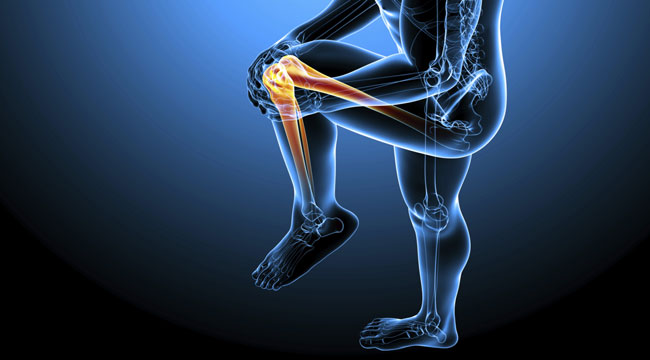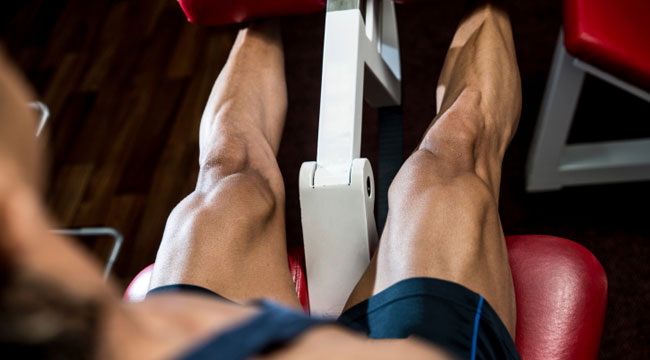28-Days-to-Lean Meal Plan
With the right plan and the right discipline, you can get seriously shredded in just 28 days.
Read article
When you look around many meathead gyms, you’re bound to see at least one guy who’s got a well-developed upper body, and then a pair of chicken legs that just won’t cut it. Nine times out of 10, the same guy is also prepared to recant a list of excuses as to why he’s sporting the toothpicks he has for legs. Here are my favorites:
The funny part is, no one just says that they’ve got skinny legs and know it’s because the training is not on point.
If you’re still reading, you’re one of those 10 percent who are honest with themselves and looking to make a bad situation much, much better. Take these points of wisdom home and you’ll realize that you’re not stuck with chicken legs if you just do the right thing about it.
I always find it funny when people make this claim and then you realize that two thirds of their weekly “leg training” comes in the form of house league soccer games and their morning walk to work. For some reason, somebody out there created the myth that the muscles of the lower body should be trained once weekly. Unfortunately, the masses have followed suit. The truth is, this can set up someone who has a hard time seeing lower body development for a leg-building rut. In the athletic world, if you look at the training programs of athletes with the most impressive leg development (think of sprinters, cyclists, Olympic lifters), you’ll see that lower body training enters their regimes multiple times per week. For example, simply adopting the old school “Bulgarian method” of low-rep squatting every workout can create a cumulative volume that not only increases your strength, but helps you slap on size too due to the hormones you release to do it.

If this is true, then it makes even more sense to zero in on them and make them stronger. Here’s the thing: chronic knee pain and joint stress is usually a result of a tight muscle on one side, and a weak muscle on the opposing side. With that in mind, focus on the tissue quality of your muscles (the quads and hips are usually the culprit when it comes to knees). Grab a dense foam roller and precede your workouts by releasing your muscle tissue, and follow that up with a good stretch before and after training. Within your workout, try to emphasize movements that don’t make the quads do the majority of the work. Deep, Olympic lifting style squats may be out, but box squats, reverse lunges, reverse hypers, and glute hamstring raises are good choices. Of course, deadlifts are of prime importance too to add some size on the posterior chain. Bad knees don’t mean you can’t train smart. And to address bad knees directly, try Peterson step ups, seen here:
Well it sucks to be you then, doesn’t it?
This may be extremely true, but I find it to be the biggest scapegoat excuse for not working hard to get the results you want. Especially as I highlighted in the first subheading, people for some reason think it’s more than OK to do the chore of training the legs once weekly so that they can retreat to their upper body workouts for the remainder of the week. What’s worse is that that once weekly workout comprises of 4 sets of 10 squats, 3 sets of walking lunges, and maybe some RDLs. That’s not even enough volume for someone who’s already got tree trunks for legs, so what makes you think it would suit a hardgainer? Simply put–you’ve got to put in overtime if you have a genetic predisposition to small legs. Training systems like German Volume Training, German Body Comp, Gironda’s 8×8 method, and other high volume training systems do well to stimulate leg size. Here’s an example of what I mean, as I demonstrate some ladder sets.

Burnout sets are a great thing to do on your off-days also. Your legs will still be fresh, and one set won’t kill you with soreness for the rest of the week, meaning you can repeat this more than once over the course of the week. Take a page out of Dan John’s book and do one massive set of squats at the end of your workout. Here’s my max rep set with 225 lbs.
Don’t let restrictions take control of your ability to help yourself when it comes to lower body training. You can beat the myth of skinny legs if you just employ the right methods. Lower body muscles are no different from any others, and therefore they can grow with the proper stimulus. It’s all about taking the right steps to make it happen.
Notifications